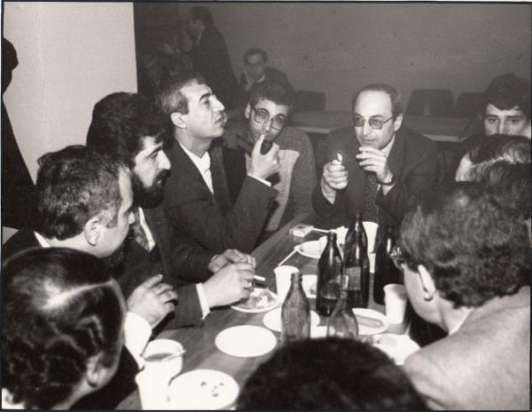
YEREVAN, U.S.S.R., Sept. 1— Armenian officials today supported an American Congresswoman's call for a United Nations peacekeeping force in the disputed enclave of Nagorno-Karabakh, where ethnic combatants have seized 25 hostages.
The proposal came from visiting Representative Barbara Boxer, Democrat of California. "I'm afraid if we do nothing, we could have the makings of something with very serious consequences," she said. Prime Minister Vazgen Manukyan of the Armenian republic called the idea "brilliant."
Ms. Boxer was on a fact-finding mission in the tense southern region of the Soviet Union two weeks after a failed Kremlin coup set off a rush toward independence by Soviet republics.
The developments raised new questions about disputed areas like Nagorno-Karabakh, an Armenian-populated enclave within Azerbaijan that is claimed by Armenia.
The Azerbaijani side had no immediate reaction to Ms. Boxer's proposal. A Hostage Standoff
Six ethnic Azerbaijanis and four Armenians have been taken hostage in Nagorno-Karabakh in the last two days, the Tass press agency said today. Their capture brought the number of hostages held by the two sides side to 17 Armenians and 8 Azerbaijanis, said Tass, which reported that the interior ministries of both republics were trying to negotiate an end to the hostage standoff.
Azerbaijan last week declared independence from the Soviet Union, vowed to form its own army and claimed the right to negotiate directly with Nagorno-Karabakh officials on the future of the region. Armenia has not declared independence, but the leadership of its Parliament decided today to seize all assets of the Communist Party in the republic.
Refugees in Kirovakan, about 60 miles northwest of Yerevan, said Azerbaijanis continued to harass Armenians in the border region. Aznibe Gabrilian, choking back sobs, described how five Azerbaijani policemen had stopped her car and beat her, saying they were getting even for outrages committed by Armenian men against Azerbaijani women.
Ethnic and territorial differences flared into open violence in 1988 between predominantly Muslim Azerbaijan and Armenia, most of whose residents are Christian.
Armenia's Vice President, Babken Ararktsyan, said 76 Armenians had been killed since May, when the dispute spilled into Azerbaijani border villages populated mostly by Armenians. He said the total Armenian death toll was about 400 since fighting broke out in 1988. There was no independent verification of the figures, or word on the number of Azerbaijani deaths.
Map of Azerbaijan indicating Nagorno-Karabakh.
By AP
Published: September 2, 1991
nytimes.com










